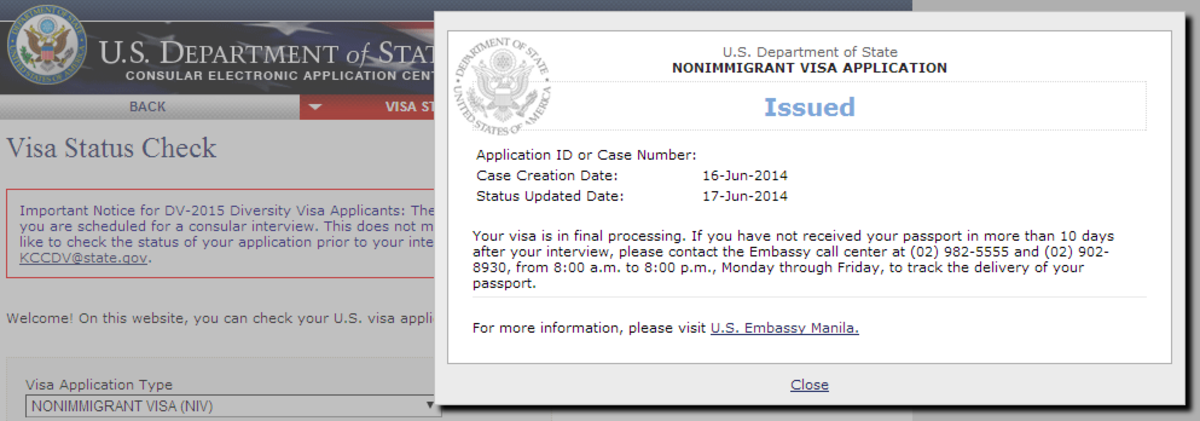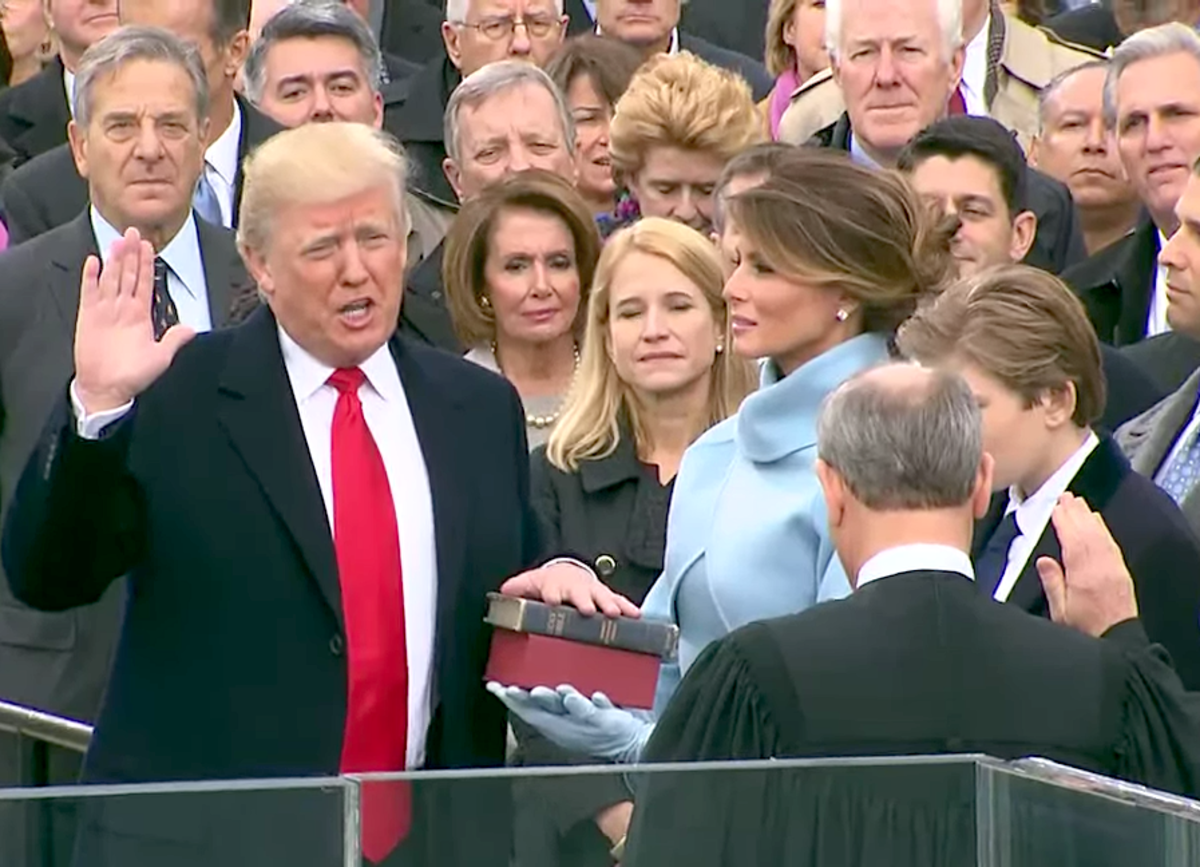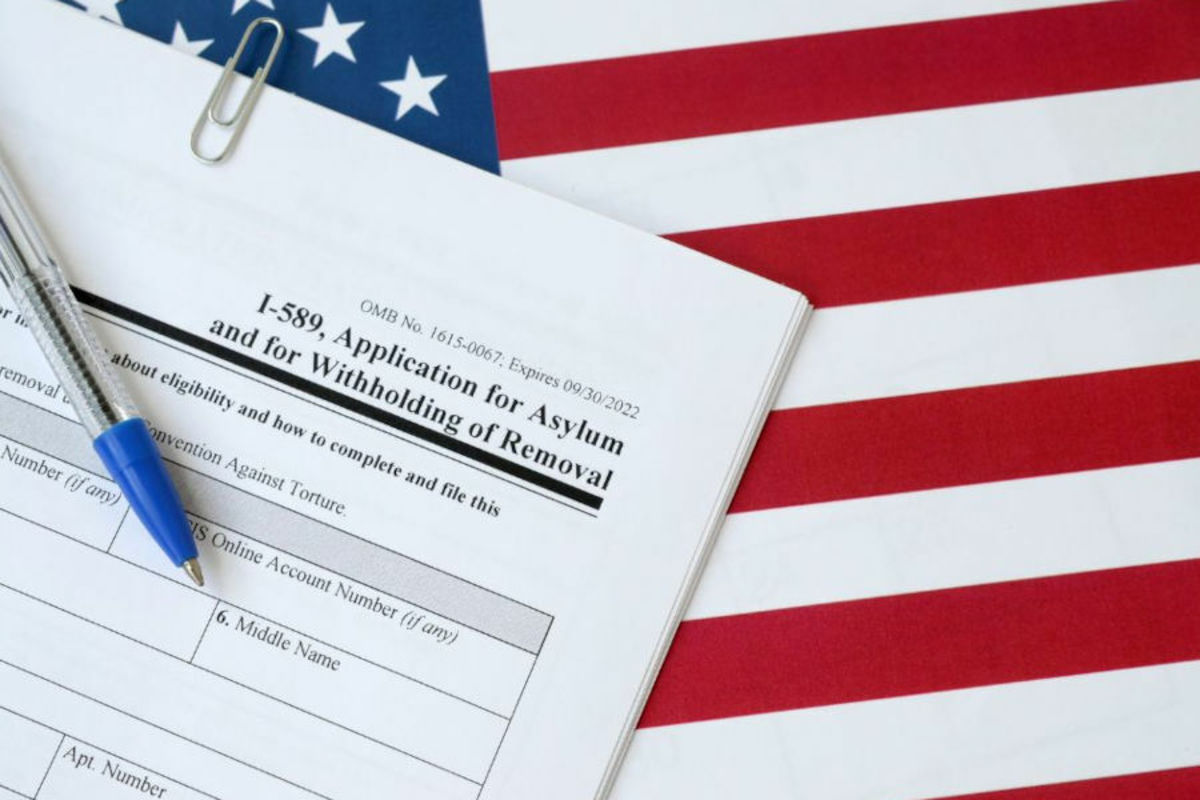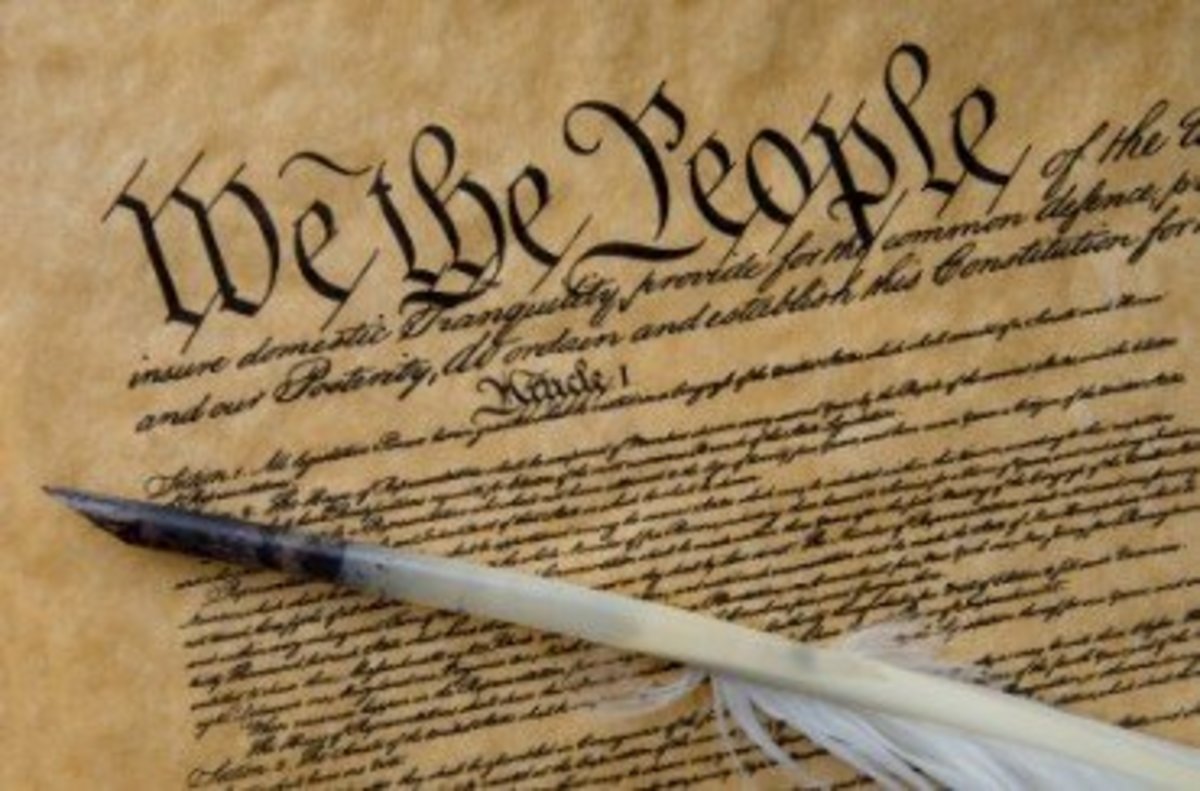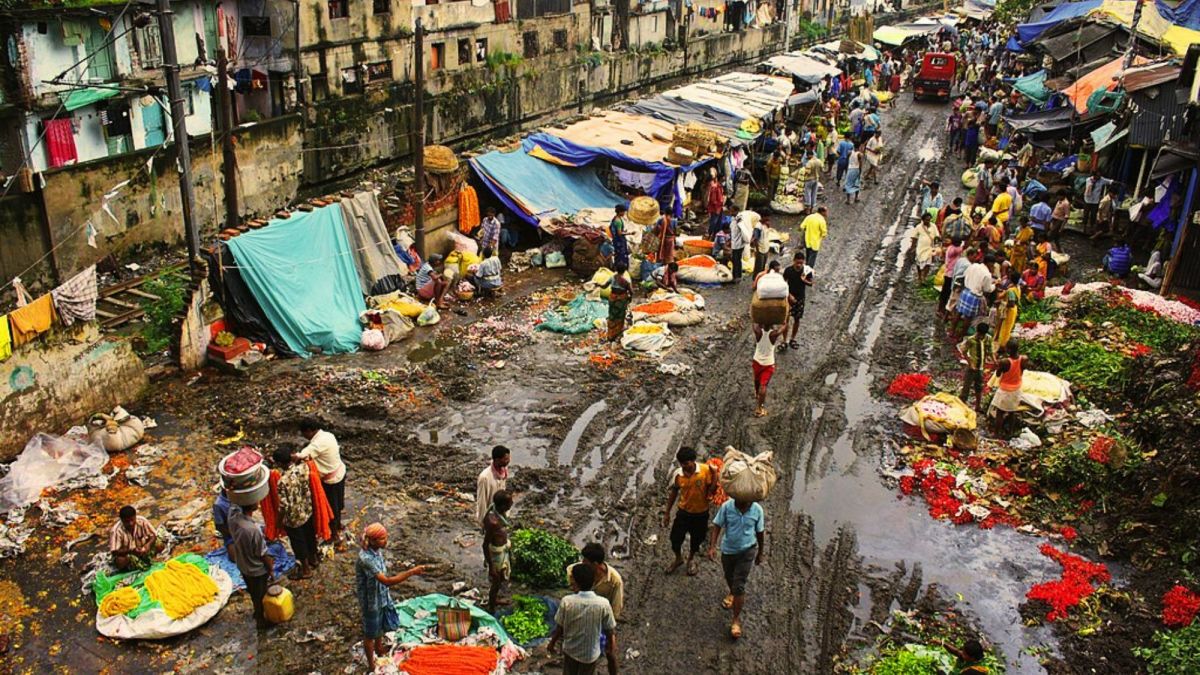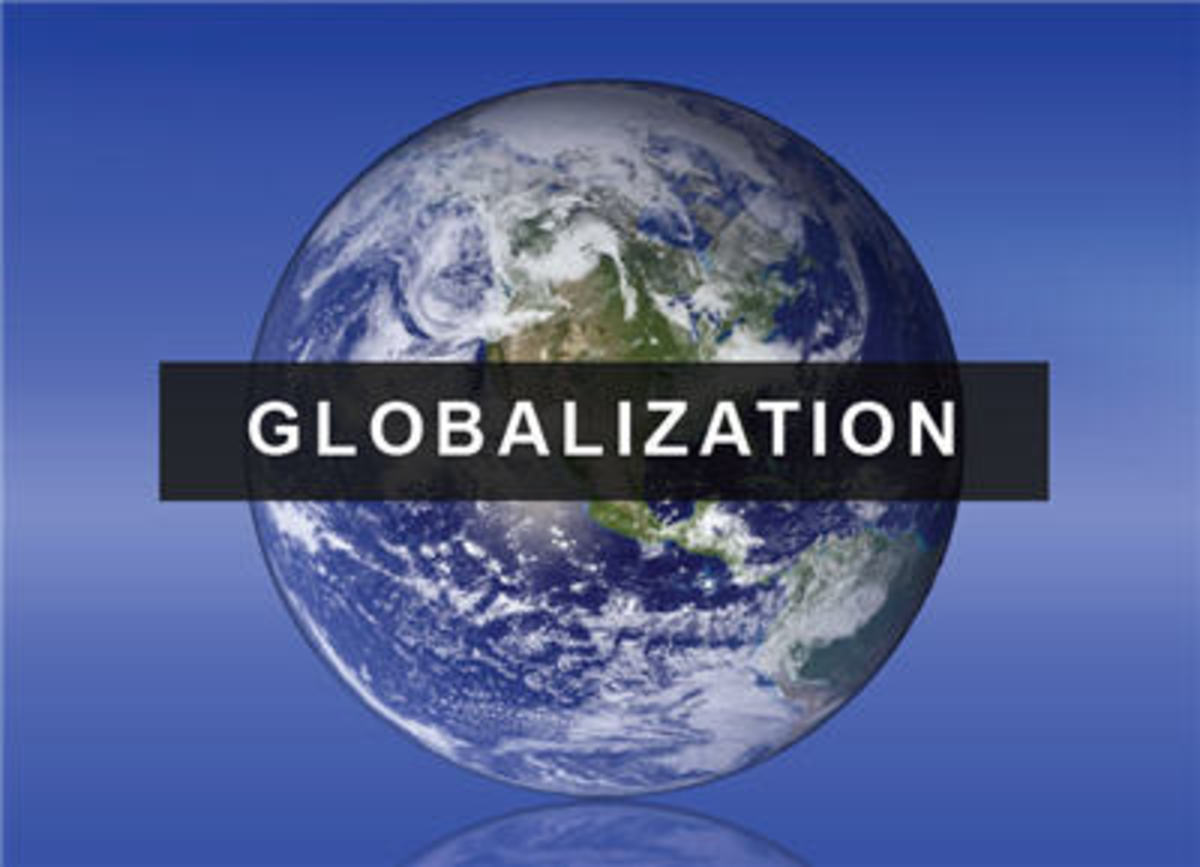Fiance Visa 2018 Statistics
Trump’s 2nd year of presidency was the worst for the Fiance K Visa process
Although President Trump’s immigration orders have never directly targeted the Fiance K visa process, this particular visa category has suffered as an innocent bystander.
During the span of Trump’s four years in office, conditions were dismal for visa applicants, with 2018 being particularly bad. There was a record low number of K visas issued at 28,662 worldwide, where normally there would be over 40,000 issued annually.
What exactly happened that caused this massive dip? There was not one, but several factors.
Aside from extreme vetting procedures which forced the US Department of State to slowly examine each applicant for enhanced security, there were political setbacks resulting from shortsighted diplomacy which forced Embassies to close altogether.
Next were the strategic changes made to US embassies worldwide in order to reduce the workforce and footprint.
The final reason was that the US placed travel bans on certain countries entirely.
With these three combined, 2018 became one of the worst years the K visa process has ever seen. First, let’s discuss how the visa process was before Trump took office and how it changed quickly thereafter.
Approval rates and conditions before Trump became president
For those unfamiliar, the Fiance K visa process is a popular route for bringing a foreign partner to the US by an eligible US citizen petitioner.
For example: Jack, a US citizen, might visit Germany to reconnect with his lineage but also take the opportunity to learn the language at a local institute. In his brief trip, he meets a non-American language lover and they begin a relationship. If Jack and his partner decide to marry, he can petition for her visa to come to the US and marry.
This is one of the handful of ways in which a foreigner can get a Green Card (i.e. Lawful Permanent Resident status).
The two branches of the DHS involved with processing K visas are the United States Citizenship and Immigration services (USCIS) and the Department of State (USDOS).
Jack will need to fill out and submit the I-129F application to the USCIS. This agency reviews his form, verifies that the couple is eligible and, if everything looks acceptable, they ship the case to the US Embassy abroad. On average, there are about 45,000 I-129F petitions similar to Jacks’ which are received and approved by the USCIS every year. (source USCIS reports-studies)
When the US Embassy receives the approved case, their duty is to verify the information and invite the foreign visa applicant to an interview. In typical years, the US embassy approves about 40,000 visas per year worldwide.
It’s important to note that, in terms of immigration, things weren’t “great” even before Trump. There were routine errors, delays and denials. However, the K visa process was still one of the quickest and convenient ways to get a loved one into the US.
Trump changes immigration in 2018
What happened in 2018 was a series of overlapping political agendas which lead to a 40% drop in fiance visa approvals.
First, Trump lost friends in many countries which had snowball effects on visa processing. For example, in early 2018, the US expelled several Russian diplomats and ordered the shutdown of the Russian consulate in Seattle under suspicion of espionage. In retaliation, Moscow ordered the US consulate in St. Petersburg to close, forcing the US to pull out their presence. The visa workload which was normally handled by St. Petersburg was shifted to the US Embassy in Moscow. This created an overload for not just Russian applicants, but also those of neighboring countries who came to Russia for the interview.
The second and probably most impactful reason was that Trump pressured the US Department of State to reduce its footprint worldwide and pull the workforce back home. This was meant to save cost and improve efficiency. As a result, many embassies were consolidated and, not surprisingly, short on staff. In India, for example, there were originally several US Embassies which processed immigrant visas, such as fiance visas, in different parts of the country. The workload was manageable. With Trump’s order in late 2017, however, there was only 1 embassy left in the entire country of 1+ billion people which was allowed to process K visas. While the remaining embassies were still operational, they only adjudicated some immigrant and other non-immigrant visas. Therefore, the entire workload of K visa and other immigrant visas processing shifted to Mumbai.
The final reason for the plummet in 2018 was because Presidential Proclamations 9645 and 9983 placed strict travel bans on several countries' immigrant and/or non-immigrant visas completely. As a result, some applicants heard silence from the US Embassy while placed under “Administrative Processing” for years. Officers were informed to make few exceptions and treat everyone on a case-by-case basis. Many K visa cases, such as those from Iran, did not see the light of day for years.
These three major reasons created a downward spiral which resulted in the sudden and widespread reduction of fiance visas throughout the world.
Statistics document the dramatic drop
Let’s look at the official figures from the Dep’t of State and how they corroborate the same message.
In 2017, the US Consulate processed 40,208 fiance visas worldwide. This was considered a “normal” rate even during President Obama’s time in office. It was comparable to the incoming 49,381 I-129F petitions the USCIS approved. In other words, the Department of State kept up.
However, a noticeable drop occurred in the second year of Trump’s presidency. Statistics show that although the number of I-129F applications were steady in 2018, the number of approvals were down significantly. There were 47,495 I-129F incoming and approved by the USCIS, but only 28,662 visas granted. The USDOS only approved 60% of applications. In addition to not having enough time to process them, there was also a slight increase in percent of denials.
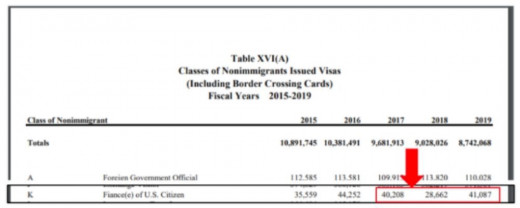
The frustration of delays and denials were apparent in the voices of applicants worldwide. Many reported that they were unable to schedule their interviews for the upcoming three months long after having been told the Embassy was “ready” for them. When they logged into the Embassy’s scheduling website, they were continuously given an ominous “no available dates” notice.
What’s happening now
In 2019, things bounced back to normal. The USCIS received 45,274 new I-129F applications and the USDOS reviewed and approved 40,208 of them, meaning that this time the USDOS is now keeping up.
However, the Department of State abroad is still susceptible to bottlenecks and delays for K visas like it was in 2018. This is quite apparent now during the 2020 COVID-19 outbreak. During the COVID-19 shutdowns, the USCIS was still operating and adjudicating fiance visa petitions. However, the US Embassies worldwide were shut down almost completely. This has created a huge backlog of thousands of applicants waiting to get scheduled and have an interview.
In order for things to return to normal, the solution is either: introduce more Consular staff into overloaded Embassies, rebalance the workload with those Embassies who can accommodate it, or find quicker ways to conduct interviews to outpace the growing backlog… otherwise we may see delays lasting years.
This article is accurate and true to the best of the author’s knowledge. Content is for informational or entertainment purposes only and does not substitute for personal counsel or professional advice in business, financial, legal, or technical matters.
© 2020 Prem Kumar


